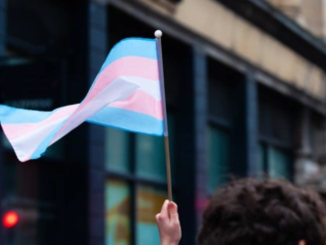
New York will confront an increasingly serious energy-supply problem of its own making within the next decade. A series of policy initiatives culminating in 2019’s Climate Leadership and Community Protection Act have committed the state to unrealistic goals that will increase electricity demand while making supply less reliable.
Among these policies are the state’s plans to electrify transportation and space heating, a peaker-plant rule that will shut down reliable fossil-fuel power generators and a de facto ban on natural-gas-pipeline expansion.
The overarching goal is to reduce the state’s total greenhouse-gas emissions by 85% by 2050. Along the way, the state aims for 70% renewable energy by 2030 and 100% emissions-free electricity production by 2040.
This is despite the fact that New York has one of the country’s cleanest energy profiles and greenhouse-gas emissions from electricity production have already dropped substantially with the closure of the state’s coal-fired power plants.
Ultimately, energy policy must balance three factors: reliability, affordability and low emissions. New York’s error is to overemphasize low emissions over affordability and, especially, reliability.
To meet its goals, the state needs to add 20 gigawatts of renewable generation in the next eight years. And by 2040, only 18 years from now, it needs to roughly triple its electricity-production capacity by adding 95 gigawatts. But in the past 20 years, only 13 gigawatts of new generation has been brought online, while there’s been a net loss of two gigawatts in the last five years.
New York has been moving away from, instead of toward, meeting its electricity needs.
New York will be dealing with a grave energy-supply problem within the next decade.
Because the state is unlikely to build out generating capacity fast enough to meet rising demand and offset the required closure of reliable fossil-fuel plants, demand could surpass supply in the 2030s. If that happens, blackouts that take human lives and harm the economy could only be avoided by importing more polluting energy from out of state, undermining clean-energy goals.
The risk is exacerbated by the potential shutdown of three of New York’s remaining nuclear reactors, scheduled for relicensing by 2035. This would take another two gigawatts of emissions-free energy offline. While the state’s reliability needs require keeping them open, their unprofitability and opposition by anti-nuclear activists make their continued operation uncertain.
Even if the state does manage to build renewable generation quickly enough to meet its goals, the variability of solar and wind power — caused by cloudy and/or windless days — creates reliability problems. The just-released scoping plan that’s the roadmap for implementing the Climate Leadership legislation admits there will be days, or even weeks, when there’s insufficient solar and wind energy to meet state needs.
According to the New York Independent System Operator, this means that by 2040 the state will be missing 10% of the power supply it requires to get through winter. This leads to the search for “DEFRs,” dispatchable emissions-free resources that can provide reliable electricity while meeting the state’s clean-energy goals.
The only problem is that nobody has yet identified any DEFRs that can be cost-effectively produced at the scale needed. The state is relying on the mere hope that further research into a source such as hydrogen will make it a plausible point of supply in the required time frame.
New York has been going in the wrong direction when it comes to meeting its electricity needs.
To make up for the variability of solar and wind, New York will have to overbuild those sources and keep on hand a full secondary-power system capable of producing the majority of its electricity needs during extended periods of cloudiness and low wind. This will be extremely expensive and paid for by the public either as electricity ratepayers or taxpayers. It could also lead to a steep decline in the Empire State business investment.
New York needs to rethink its energy policy from the ground up. But this time, instead of making the goal of emissions-free energy the primary consideration, policymakers must give sufficient weight to affordability and especially reliability.
If they don’t, New York faces a grim future of costly and unreliable energy, a situation more representative of a developing country than a state that considers itself a world leader.
James Hanley is a fellow with the Empire Center for Public Policy. Adapted from “The Next New York: Renewing and Reforming the Empire State,” a project of the Empire Center at NextNewYork.net.
* Article from: The New York Post


